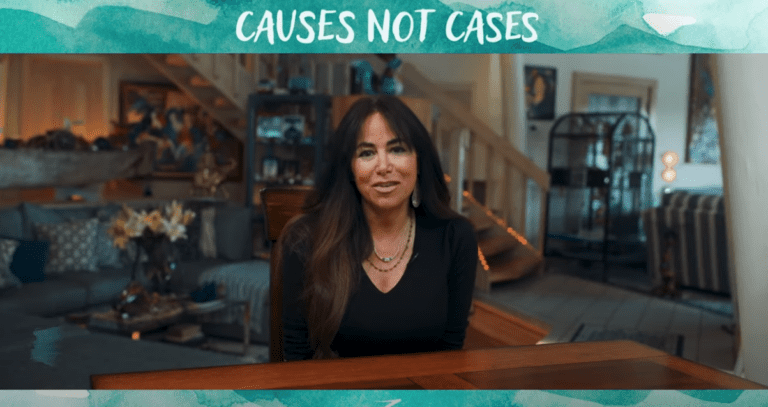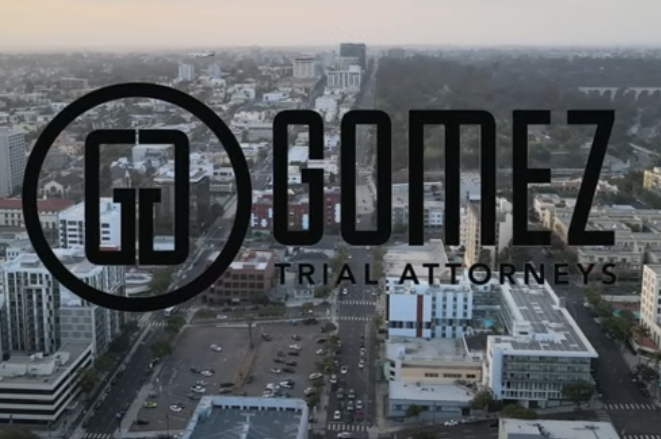Trucks are an economic backbone of America. They transport the goods and raw materials we all need to live productive, healthy lives. They also support the employment of tens of thousands of Californians: truck drivers who receive special training and, depending on where they drive, must comply with detailed federal or state rules limiting how many hours in a row they can drive at a stretch.
But as necessary as trucks are to business and commerce, and as well-trained and careful as truckers are supposed to be, they also pose a real and constant danger to others on California roads. In a collision with a passenger vehicle, trucks inflict catastrophic, often life-ending injuries. When they roll over, trucks leave behind tremendous damage and trigger secondary accidents. When they catch fire and explode, trucks destroy lives and property. And when trucks sideswipe cyclists and strike pedestrians, they nearly always cause tragic deaths.
To be an informed user of California’s roads, it’s important to know how to distinguish one truck from another. Being able to identify trucks makes you more likely to avoid those that put you in danger, and more able to report the details of a truck accident to the authorities if you witness one. In this blog post, we walk you through some of the most common trucks you are likely to spot on California highways and byways.
If an accident involving any kind of truck causes you harm or loss, contact an experienced California truck accident attorney right away.
[lwptoc]
1. Tractor Trailers (Big Rigs, Semis, 18-Wheelers”)
Regardless of what name you use for them, tractor trailers dominate American highways. Most commonly, they comprise a tractor truck and a single trailer mounted to the truck by a hitch or similar attachment. California also permits so-called “tandem” or “twin” trailers (two trailers behind a tractor truck) so long as they comply with state limitations on their total length. Most trailers are box-shaped containers, but some tractor trailer combinations feature trailers designed to carry specific types of cargo, including flatbed trailers, open-top container trailers, log trailers, tanker trucks (see below) and “intermodal” trailers that carry shipping containers.
Tractor trailers are long, tall, and have high centers of gravity. This makes them prone to rolling over, especially when a driver enters a sharp curve too quickly, when the cargo in (or on) the trailer has not been properly secured, or when the trailer’s wheels leave the road surface onto a low shoulder. Tractor trailers are also the only vehicles that can jackknife, which occurs when the tractor truck folds backward against the trailer like a pocket knife.
All drivers on the road should be reminded that tractor trailers have large blind spots. For the typical tractor truck pulling a single trailer, the driver’s blind spots extend twenty feet in front of the truck’s cab, thirty feet directly behind the trailer, one lane to the left of the cab from just over the driver’s left shoulder to the rear of the trailer, and two lanes to the right of the cab running the entire length of the truck (these blind spots are even larger when the tractor truck pulls two trailers in tandem).
Exercising “blind spot” safety around a tractor trailer means avoiding those areas as much as possible, and moving out of them as quickly as possible when entering them is unavoidable. The rule of thumb all drivers should remember about tractor trailer blind spots is: if you can’t see the truck driver in his side mirrors, then he can’t see you.
2. Tanker Trucks
Tanker trucks are tractor trailers that pull a specially-designed tank that carries liquid or liquified gas. What makes them different from ordinary tractor trailers is that they often (though not always) carry cargo that is highly flammable or hazardous. When that is the case, their drivers must also have special training, and the tanks themselves must meet strict specifications set by law and regulations to ensure they do not breach or leak.
In other words, tanker trucks pose an especially high risk to public safety when they get into an accident. Not only can they cause the same type of damage any other tractor trailer can inflict in a collision with another vehicle, they also have the potential to explode or release toxic substances. It is this risk of widespread destruction that extensive regulations aim to minimize.
But minimizing risk isn’t the same as eliminating it. Drivers should exercise caution around tanker trucks as they would any other vehicle. They should also be vigilant in reporting to the proper authorities any evidence of a tanker leaking or a tanker driver operating erratically. No one wants to be the person who could have prevented a catastrophic tanker explosion, but didn’t speak up.
3. Box Trucks (Straight Trucks and Delivery Trucks)
A box truck is any truck that carries cargo but has its cargo-carrying component permanently attached to the rest of the vehicle. A box truck often resembles a slightly smaller version of a tractor trailer. Refrigerated delivery trucks and rental trucks, for example, are typically box trucks. But other shapes and sizes of trucks also fall into the category of “box truck,” including delivery vans and certain specialty vehicles (like trucks that carry large panes of glass). In other words, a box truck isn’t just a truck with a rectangular “box” on the back, but covers any sort of cargo truck with a fixed (not removable) cargo-carrying element.
Box trucks that resemble tractor trailers have similarly-sized blind spots and pose similar risks of tipping over on sharp curves or when improperly loaded. Additionally, it is not always the case that the driver of a box truck has a specialized permit to operate it. That rental moving truck next to you on the road may be driven by a 19-year old college student headed back to school, who has absolutely zero experience behind the wheel of a large vehicle. Exercising caution around box trucks is a good idea.
Similarly, do not assume that a box truck with a shape and configuration other than the standard rectangular design has smaller blind spots. All vehicles have blind spots, and the more specialized the vehicle the more unfamiliar its blind spots are both to its drivers and to others on the road. Give all trucks a wide berth if you can, and always follow the mirror rule above.
4. Heavy-Duty Work Trucks (Dump Trucks, Concrete Mixers, and Garbage Trucks)
Like box trucks, purpose-built work trucks have a cargo element attached to a truck body. Unlike box trucks, the function of these trucks isn’t to carry finished goods and cargo, but instead to carry and move waste and raw materials. One aspect that makes heavy-duty work trucks different from the perspective of others who share the road with them is that they are known to “leak” cargo. All drivers have had the unpleasant experience of sharing the road with a dump truck full of gravel that spills just enough if its load to dent hoods and crack windshields.
Another aspect of work trucks that makes them hazardous to others on the road is that they carry heavy weight frequently and take a significant amount of abuse. A hard-worked dump truck will, on the whole, tend to be less road-worthy and safe to drive than a truck designed and used to transport finished products.
Drivers should take care around these trucks because they have blind spots just like any other. Then, in addition, drivers should give these trucks even more room to operate, both because that minimizes the risk of sustaining damage from spilled cargo, and because it’s a good bet heavy work trucks will need more stopping distance than other vehicles.
5. Oversize Loads
A truck carrying an oversized load is one that exceeds the permitted length or width of an ordinary truck on California roads. A prefabricated house being carried on a flatbed trailer is a typical example of an oversized load. The important things to know about an oversized load are that its blind spots are very large and unpredictably-shaped, its ability to maneuver is limited, and its stopping distance exceeds that for almost any other vehicle on the road.
As with other large trucks, drivers should give oversize loads extra room to operate when they encounter them. Exercise extreme caution when trying to pass an oversized load, keeping in mind that it may encroach on the passing lane and may become difficult for its driver to control in windy conditions.
6. Fire Trucks and Other Emergency Vehicles
We all know what a fire truck looks like. But do you know what to do if you encounter one on a California road? According to the California Driver Handbook:
You must yield the right-of-way to any police vehicle, fire engine, ambulance, or other emergency vehicle using a siren and red lights. Drive to the right edge of the road and stop until the emergency vehicle(s) pass. However, never stop in an intersection. If you are in an intersection when you see an emergency vehicle, continue through the intersection and then drive to the right as soon as it is safe and stop. Emergency vehicles often use the wrong side of the street to continue on their way.
In addition, it is illegal to follow within 300 feet behind any emergency vehicle with its siren and lights activated.
Give emergency vehicles the widest berth possible. That includes not just fire trucks and ambulances, but also road construction vehicles and tow trucks stopped at the side of the road to render service. Operators of these vehicles perform an essential service that keeps all of us safe. It is the least we can do to return the favor and keep them safe by slowing down, moving over, and giving them room to do their jobs.
Truck Identification Tips
Say you witness a truck accident on the highway. Would you know how to describe the truck involved to emergency responders? If you absorbed the information above, perhaps you could tell the 911 operator exactly what type of truck you saw. But even if the names of truck types don’t stick in your mind, that’s okay. If you pay attention to four specific features of a truck, you can provide accurate, useful information to anyone who comes to the accident scene to render aid.
- Size and shape. Is the truck tall and boxy? Low and squat? When you see it, do you associate it with a particular kind of cargo? All of this information can give a responder clues and valuable information about the type of truck involved in an incident.
- Elements. Does the truck have a trailer attached by a hitch? Or are the truck body and cargo-carrying elements all a single unit? This will distinguish a tractor trailer from a box truck, and give authorities a head’s up about the types of equipment they may need to bring to the scene to perform a recovery.
- Markings. Are there any notable markings on the side or rear of the truck? Can you get close enough, safely, to see what they say? This can be critical public safety information, particularly if the accident you witnessed involves a tanker truck and its cargo is toxic or flammable.
- Cargo. Can you tell by the shape or features of the truck what kind of cargo it carries? Has any of the cargo spilled on the road and, if so, can you identify it? Warning first responders and others about features of cargo can save lives in the aftermath of a truck accident.
Truck Knowledge Can Keep You Safe
Trucks perform an essential function in our lives. But we also pay a price for the benefits they provide. Knowing the types, features, and hazards of trucks with which you share the road could save your life, or the lives of others. If you have questions about your or a loved one’s legal rights after a California truck accident, an experienced truck accident attorney at Gomez Trial Attorneys can help.







